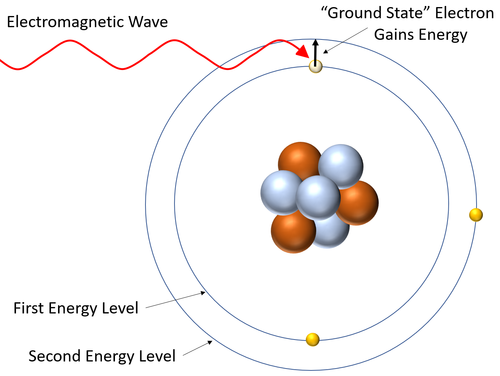Difference between revisions of "Absorption Spectra"
| Line 1: | Line 1: | ||
==Key Stage 4== | ==Key Stage 4== | ||
===Meaning=== | ===Meaning=== | ||
| − | [[File: | + | [[File:AbsorptionSpectrum.png|right|300px|thumb|The [[Absorption Spectra|absorption spectra]] of several [[metal]]s.]] |
'''Absorption spectra''' are the specific [[wavelength]]s of [[light]] [[Absorb (Physics)|absorbed]] by the [[electron]]s in [[atom]]s as they gain [[energy]]. | '''Absorption spectra''' are the specific [[wavelength]]s of [[light]] [[Absorb (Physics)|absorbed]] by the [[electron]]s in [[atom]]s as they gain [[energy]]. | ||
Revision as of 13:31, 22 February 2019
Key Stage 4
Meaning
Absorption spectra are the specific wavelengths of light absorbed by the electrons in atoms as they gain energy.
About Emission Spectra
- An absorption spectrum is made by passing white light through a material or reflecting it off a material then sending it through a prism to separate the colours.
- The spectrum of white light is a continuous change of colours with all wavelengths having the same intensity.
- An absorption spectrum is a set of specific wavelengths with a low intensity. This appears as dark lines of of missing colour from the normal spectrum made by white light.
- A absorption spectrum is created when electrons absorb the energy from an electromagnetic wave and jump to a higher energy level in an atom. This removes that particular wavelength of electromagnetic wave white light being transmitted or reflected from that material.
- The wavelengths of electromagnetic wave depend on the energy difference between the energy levels in atoms.
| This diagram shows an electron gaining energy by absorbing an electromagnetic wave and becoming excited (moving to a higher energy level). |

